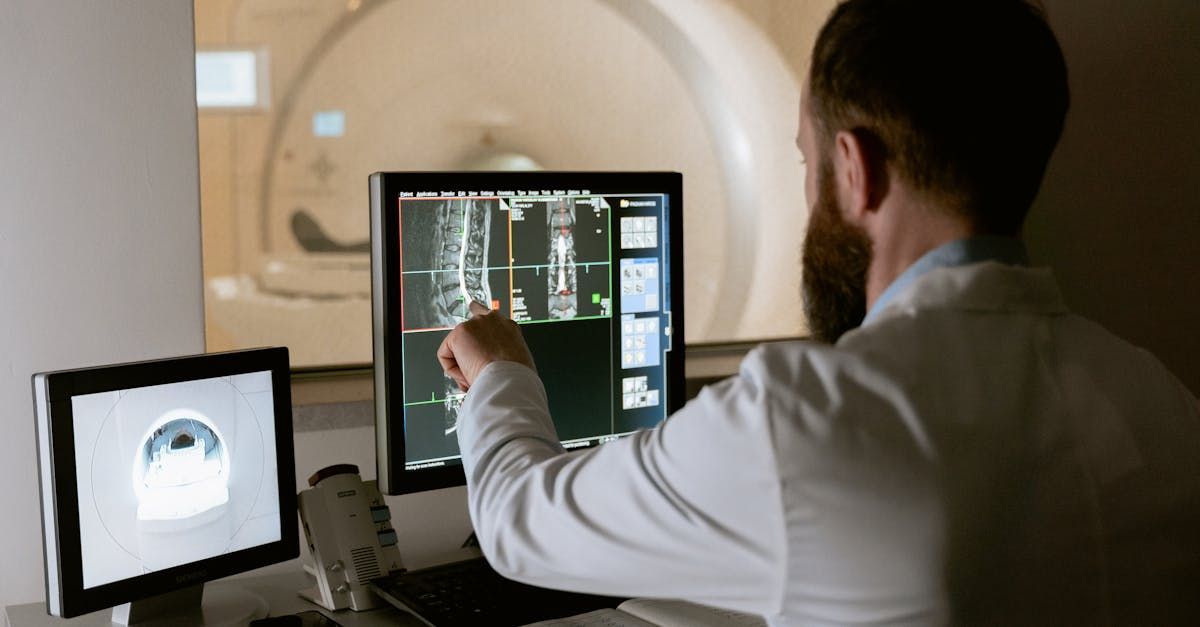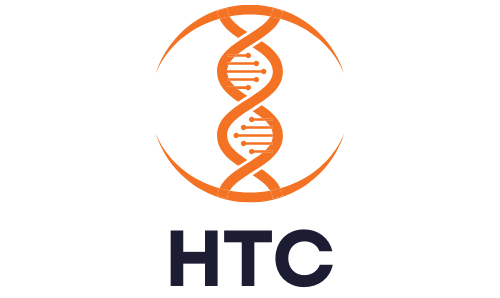Venture Capital

Given the complexity of the biological mechanisms that underlie cancer, it is prudent to identify and target more than one Achilles’ heel to attack this multifactorial disease. This can be achieved by employing combination therapy, an approach to cancer treatment that combines multiple therapeutic agents to improve patient outcomes. Notable Labs is at the forefront of revolutionary advancements in combination therapy, one noteworthy example being its long-standing collaboration with Syros Pharmaceuticals. For Syros, Notable developed a highly efficient predictive biological test to screen patients for the clinical trial of a combination therapy against non-acute promyelocytic leukemia (APL) acute myeloid leukemia (AML). Notable Labs’ innovative approach to combination therapy holds immense promise for significantly improving cancer treatment outcomes despite current limitations in commercial pursuit. This blog dives into the science behind the promise of combination therapy, how Notable is contributing toward the evolution of this technology, and why the company’s Board of Directors is excellently positioned to advance this field in the future. Notable Labs' investigation into combination therapy against cancer is backed by decades of scientific research. Combination therapy holds immense promise in the fight against cancer because of its ability to additively or synergistically target two or more cancer pathways. Due to its multi-target approach, combination therapy is also an effective strategy to overcome anti-cancer drug resistance. By collaborating with Syros in 2017, Notable Labs contributed to the phase II clinical trial of a therapy combining the drugs tamibarotene and azacitidine against non-APL AML. For this multi-arm monotherapy and combination therapy trial, Notable developed a blood-based biomarker test to help predict patient response to treatment. Specifically, Notable was involved in conducting ex vivo experiments on peripheral blood mononuclear cells (PBMCs) isolated from the blood samples of non-APL AML patients. Harnessing the power of high-throughput flow cytometry, these experiments revealed that a 72-hour ex vivo exposure of PBMCs to tamibarotene upregulates various markers of myeloid cell differentiation, including the RARα pathway target CD38. Importantly, treatments that can promote myeloid cell differentiation are known to be effective against some subtypes of AML. Therefore, by testing a patient’s blood sample using Notable’s ex vivo approach, it is possible to predict whether the patient is likely to respond well to tamibarotene in monotherapy and combination therapy. Indeed, Notable’s ex vivo assay became one of the strategies Syros adopted when screening patients for enrolment in the phase II clinical trial of tamibarotene (alone as well as in combination with azacitidine). Market Challenges Currently, cancer treatment – and thus, the oncology market as a whole – is faced with a three-pronged challenge. There are millions of non-responders who are not benefiting from chemotherapeutic drugs, thousands of compelling drugs that need to be shelved because of perceived non-response, and hundreds of promising candidate drugs that are struggling to navigate the drug development pipeline. Notable Labs is committed to resolving these challenges through its successfully tested predictive precision medicine pipeline, a significant application of which was demonstrated during the Syros clinical trial. Notable Labs’ commitment is also one of the reasons why it has decided not to commercialize the combination therapy technology immediately. Notable wants to focus on refining the technology further, expanding its applications, and ensuring that it integrates seamlessly into existing healthcare systems. The company aims to develop more sophisticated prediction models and address regulatory and logistical challenges. This approach will help make Notable's technology accessible to a broader patient population, maximizing the life-saving potential of predictive diagnostics as well as combination therapy. Broader Applications The high-throughput nature of Notable’s ex vivo flow-cytometry-based predictive precision medicine pipeline has helped identify many powerful drug combinations to treat other cancers such as juvenile myelomonocytic leukemia. This pipeline also has great potential for identifying effective drug combinations and guiding patient enrolment in clinical trials of combination therapies for other cancers, including solid tumors. In the case of solid tumors, the Notable pipeline’s blood samples for ex vivo testing could be replaced by biopsy samples, circulating tumor cells, pleural effusion, or ascites, among other sampling options. Founding Story Notable’s CEO, Dr. Thomas Bock (MD, MBA), has ensured that the company is well-positioned to transform combination therapy for cancer. For decades, our CEO has worked on multiple dimensions of oncology, including precision medicine, prevention of inherited cancers, and cancer vaccines. At Notable, Dr. Bock combines his medical and business training to accomplish the company’s mission of dramatically improving patient outcomes and the success, speed, and cost of developing new medicines. Strength of the Board of Directors Notable’s esteemed Board of Directors boasts of more than 150 years of combined professional experience in premier life science companies. Our board members excel in medicine (Dr. Bock), pharmacology (Mr. Tuomo Pätsi), business (Dr. Bock), finance (Mr. Michael Rice, Mr. Peter Feinberg, Mr. Thomas Graney), media communications (Ms. Michele Galen), and law (Mr. Thomas Dubin), fostering a vibrant and eclectic environment for Notable to thrive. This diverse team of bona fide giants from the pharmaceutical and biotechnology sectors is set to efficiently guide Notable Labs on its path to success in combination therapy and beyond. Conclusion Combination therapy for cancer, aided by predictive methods, could significantly improve patient outcomes while also broadening the population of patients who can benefit from a given drug combination. Leading the charge in this direction, Notable Labs’ predictive precision medicine pipeline boasts of massive potential to not only identify effective drug combinations for combination therapy, but also guide patient enrolment in clinical trials through predictive screening. Moving ahead, Notable’s technology is set to transform the treatment of multiple types of cancer by ensuring positive patient outcomes of personalized combination therapies in shorter times and at lower costs. Additional Data Points AML statistics (American Cancer Society): estimated 20,800 new diagnoses and 11, 220 deaths in the US in 2024. Success stories and collaborations in the field of combination therapy: Notable’s collaboration with Syros to develop a predictive test for patient response to monotherapy and combination therapy. Potential impact on cancer treatment outcomes: Combination therapy, aided by predictive methods, has the potential to enhance patient outcome while also broadening the population of patients who can benefit from a given combination of drugs. Future directions for research and development: AML treatment strategies must pivot towards personalized/precision medicine because of overwhelming heterogeneity of the disease. References Combination therapy in combating cancer . (2017). Oncotarget Notable’s collaboration with Syros . (2017). Notable Labs + Syros Differentiation therapy for myeloid malignancies: beyond cytotoxicity . (2021). Blood Cancer Journal New strategies to treat AML: novel insights into AML survival pathways and combination therapies . (2021). Leukemia Precision oncology using ex vivo technology: a step towards individualised cancer care? . (2022). Expert Reviews in Molecular Medicine Targeting RARA overexpression with tamibarotene, a potent and selective RARα agonist, is a novel approach in AML . (2023). Blood Advances Notable Labs’ JMML data . (2023). Notable Labs Key statistics for acute myeloid leukemia (AML) . (2024). American Cancer Society About the Author Dr. Anjaney Kothari is a scientific writer and researcher with a decade of experience in biomedical research. He completed his Ph.D. in Biomedical Engineering from Virginia Tech (USA) in 2019, developing and characterizing holistic in vitro and ex vivo models of hepatic and gastrointestinal toxicity. He has since been working as a freelance writer and researcher for companies operating in diverse niches, including biotechnology and biopharmaceuticals. Disclaimer The content of these blogs reflects the research and opinions of the individual authors and does not necessarily represent the views or positions of Notable Labs or its affiliates. The information provided is for educational and informational purposes only and should not be construed as medical, legal, or financial advice. Notable Labs makes no representations as to the accuracy, completeness, or validity of any information in these blogs and will not be liable for any errors, omissions, or any losses, injuries, or damages arising from their use. These blogs may reference third-party research, studies, or resources. Notable Labs does not endorse or assume responsibility for the content or practices of these third parties. Any reliance on the information provided is at the reader's own risk. For biotechnology and pharmaceutical content, note that ongoing research and clinical trials may change the context and results discussed. Always refer to the latest research and guidelines from reputable sources.

The wearable technology market has evolved dramatically, from simple fitness trackers to sophisticated health monitoring devices. These HealthTech wearables, including smartwatches, biosensors, and smart clothing, play a crucial role in managing chronic diseases, cardiac monitoring, and promoting healthier lifestyles. This blog delves into the future of these innovations, exploring market trends, technological advancements like AI and IoT, and their impact on healthcare. Highlighting case studies and challenges, it presents a compelling case for investing in this dynamic sector poised to revolutionize healthcare.

Infectious diseases continue to challenge global health, as seen with the COVID-19 pandemic and other outbreaks like Ebola and Zika. HealthTech innovations are crucial in combating these diseases by enhancing prevention, detection, and treatment strategies. This blog explores the latest advancements in digital surveillance, diagnostics, telehealth, AI, and vaccine development, highlighting their transformative impact on public health. By examining case studies and emerging trends, the blog underscores the importance of investing in HealthTech solutions to improve infectious disease control and public health outcomes.

Investing in HealthTech for environmental health is becoming increasingly vital as the world faces challenges like pollution, climate change, and hazardous substances. This blog explores how HealthTech innovations, such as sensors, IoT, data analytics, and AI, are addressing these issues by enhancing monitoring, predicting risks, and improving public health outcomes. It highlights the investment opportunities in this sector, focusing on technologies that provide real-time data and insights for better environmental management. The blog also examines market dynamics, regulatory considerations, and future trends, making a compelling case for investing in this impactful and rapidly evolving field.

Genomic medicine, an evolving field, promises to revolutionize healthcare through personalized treatments based on genetic information. This blog explores the transformative potential of genomic medicine, highlighting advancements in gene editing, sequencing, and bioinformatics. Key technologies like CRISPR, next-generation sequencing, and AI are driving precise diagnosis, targeted therapies, and efficient disease prevention. The blog provides insights into investment opportunities in genomic medicine, discussing benefits, challenges, and future trends, making it a compelling read for those interested in the future of healthcare innovation.

Blockchain technology, originally developed for securing digital transactions, is now poised to revolutionize healthcare data management. By enhancing security, interoperability, and efficiency, blockchain addresses critical issues like data breaches, fragmented records, and high administrative costs. This blog delves into blockchain's role in healthcare, exploring its applications, benefits, and future trends. It also highlights case studies, such as the Estonian government's use of blockchain for health records and MIT's MedRec project, while discussing investment opportunities and the challenges of implementing blockchain in the healthcare sector.

Emergency care is a critical healthcare component, often facing challenges like overcrowded departments and resource constraints. HealthTech startups are revolutionizing this field with technologies like telemedicine, AI, wearable devices, and mobile health apps. These innovations improve response times, enhance patient outcomes, and optimize resource use. For instance, telemedicine facilitates remote assessments, AI aids in predictive triage, and wearables enable continuous monitoring. This blog explores how these startups are transforming emergency care, the benefits they offer, investment opportunities, and future trends in the sector.

The healthcare industry is experiencing a transformative shift driven by rapid technological advancements and evolving patient needs. Innovations such as personalized medicine, artificial intelligence, and digital health solutions are enhancing patient care, making it more efficient and cost-effective. This article highlights key HealthTech advancements poised to shape the future of patient care, offering insights into emerging technologies and the investment opportunities they present. By staying informed about these innovations, investors and stakeholders can make strategic decisions to capitalize on the transformative potential of the HealthTech sector.

The health technology industry is rapidly evolving, driven by technological advancements and a focus on improving patient care. This blog highlights some of the most promising HealthTech startups poised to make significant impacts in 2024. These startups, including Notable Labs, Tempus, Butterfly Network, and Omada Health, are at the forefront of innovation, offering solutions that address unmet medical needs and enhance healthcare delivery. By showcasing these emerging companies, we provide insights into the future of HealthTech and the potential transformations they could bring to the industry.

The digital health landscape is rapidly evolving, fundamentally transforming how healthcare is delivered. Digital health encompasses a wide array of technologies, including telemedicine, remote patient monitoring, mobile health applications, electronic health records (EHRs), and artificial intelligence (AI) in healthcare. These innovations are revolutionizing patient care by making it more efficient, personalized, and accessible. Digital health is essential in modernizing healthcare delivery, improving patient outcomes, and reducing overall costs. By leveraging advanced technologies, healthcare providers can enhance patient engagement, streamline administrative processes, and deliver more accurate and timely medical interventions. The integration of digital tools in healthcare has proven particularly valuable during the COVID-19 pandemic, highlighting the importance of digital health in maintaining continuity of care during crises. The purpose of this blog is to explore the vast opportunities and inherent challenges within the digital health sector, particularly from an investor’s perspective. Understanding these dynamics is crucial for those looking to capitalize on the burgeoning digital health market while navigating its complexities. Digital health is an expansive field encompassing various technologies and applications designed to improve healthcare delivery, patient outcomes, and the overall efficiency of the healthcare system. By integrating digital tools into healthcare practices, providers can offer more precise, timely, and accessible care. Digital health includes a wide range of technologies that leverage digital and mobile platforms to enhance healthcare services and delivery. Key components of digital health include: Telemedicine Telemedicine uses digital communication tools such as video calls, messaging, and mobile apps to provide clinical services remotely. It has significantly expanded access to care, particularly in rural and underserved areas, by allowing patients to consult healthcare providers without needing to travel. Remote Patient Monitoring Remote patient monitoring involves the use of connected devices to track patients' health data continuously. These devices can monitor vital signs such as blood pressure, glucose levels, and heart rate, transmitting this data to healthcare providers in real-time. This continuous monitoring allows for proactive management of chronic diseases and timely intervention when needed. Mobile Health Applications Mobile health applications (mHealth apps) are software programs designed to run on smartphones and other mobile devices. These apps can help manage various aspects of healthcare, from fitness tracking and diet management to chronic disease management and medication adherence. They empower patients to take an active role in their health and wellness. Electronic Health Records (EHRs) EHRs are digital versions of patients' paper charts, providing real-time, patient-centered records that make information available instantly and securely to authorized users. EHRs facilitate better coordination among healthcare providers, reduce medical errors, and improve patient outcomes by providing comprehensive health information. AI and Machine Learning in Healthcare Artificial intelligence (AI) and machine learning (ML) are increasingly being used in healthcare to analyze large datasets, improve diagnostic accuracy, and personalize treatment plans. These technologies can identify patterns and trends in data that may not be apparent to human analysts, leading to earlier diagnoses and more effective treatments. Current Trends and Statistics in Digital Health Adoption The adoption of digital health technologies has been accelerating, driven by advancements in technology, the need for more efficient healthcare delivery, and the increasing acceptance of digital tools by patients and providers. Key trends include: Increased Use of Telemedicine: Telemedicine usage surged during the COVID-19 pandemic and has remained high as patients and providers recognize its convenience and effectiveness. Growth in mHealth Apps: The market for mobile health applications continues to expand, with thousands of apps available for various health-related purposes. This growth is driven by increased smartphone usage and a greater focus on preventive healthcare. Advancements in AI and ML: AI and ML applications in healthcare are growing, from predictive analytics and personalized medicine to advanced diagnostic tools and administrative automation. Expansion of Remote Monitoring: The demand for remote patient monitoring devices is increasing, particularly for managing chronic diseases and supporting elderly patients at home. Adoption of EHRs: The implementation of EHR systems has become more widespread, improving data sharing, care coordination, and overall healthcare quality. These trends are reflected in the market statistics, with the global digital health market projected to reach significant growth milestones. For example, according to a report by Grand View Research, the digital health market size was valued at USD 96.5 billion in 2020 and is expected to expand at a compound annual growth rate (CAGR) of 27.7% from 2021 to 2028. By understanding the components and current trends in digital health, investors can identify key opportunities in this rapidly evolving field. As digital health continues to transform healthcare delivery, those who invest strategically in innovative technologies and companies stand to benefit significantly. Enhanced Patient Engagement and Care One of the most significant opportunities in digital health lies in enhancing patient engagement and improving care delivery. Digital health tools such as mobile apps and wearable devices empower patients to take an active role in managing their health. These technologies provide personalized health management by tracking vital signs, monitoring daily activities, and offering tailored health recommendations. Personalized Health Management through Mobile Apps and Wearables Mobile health applications and wearable devices offer personalized insights into an individual's health. These tools can track a wide range of health metrics, such as heart rate, activity levels, sleep patterns, and more. By providing real-time feedback and personalized health tips, these devices encourage users to make healthier lifestyle choices. For example, Fitbit and Apple Watch are popular wearables that not only track fitness but also offer insights into overall health and wellness. Improved Patient-Provider Communication via Telemedicine Telemedicine facilitates improved communication between patients and healthcare providers. Through virtual consultations, patients can discuss their health concerns, receive medical advice, and get prescriptions without needing to visit a clinic. This is particularly beneficial for managing chronic conditions, where regular follow-up and continuous monitoring are crucial. Telemedicine platforms like Teladoc and Amwell have seen substantial growth, especially during the COVID-19 pandemic, highlighting the increasing acceptance and demand for virtual care solutions. Data-Driven Decision Making The integration of big data analytics and artificial intelligence (AI) in healthcare is revolutionizing how decisions are made. These technologies enable the collection and analysis of vast amounts of health data, leading to more informed and precise healthcare decisions. Role of Big Data Analytics in Predicting Health Outcomes Big data analytics allows for the aggregation and analysis of data from various sources, including electronic health records (EHRs), wearable devices, and genomics. By analyzing this data, healthcare providers can identify patterns and trends that may not be visible through traditional methods. Predictive analytics can forecast disease outbreaks, predict patient outcomes, and identify at-risk populations, allowing for timely and targeted interventions. AI-Driven Diagnostics and Treatment Plans Artificial intelligence and machine learning algorithms are being developed to assist in diagnosing diseases and formulating treatment plans. AI can analyze medical images, recognize patterns, and suggest diagnoses with high accuracy. Companies like IBM Watson Health are leveraging AI to provide data-driven insights that help in creating personalized treatment plans. These advancements are not only improving diagnostic accuracy but also making healthcare more efficient. Cost Efficiency and Accessibility Digital health technologies offer significant potential for reducing healthcare costs and increasing accessibility to medical services, particularly in remote and underserved areas. Reducing Healthcare Costs through Remote Monitoring and Telehealth Remote patient monitoring and telehealth services reduce the need for in-person visits, thereby cutting down on associated costs such as transportation and hospital admissions. Patients can receive medical advice, follow-up care, and even certain treatments from the comfort of their homes. This approach is particularly cost-effective for managing chronic diseases, which require regular monitoring and continuous care. Increasing Access to Healthcare Services in Rural and Underserved Areas Telehealth and mobile health applications play a crucial role in providing healthcare access to individuals in rural and underserved regions. These technologies bridge the gap caused by the lack of healthcare infrastructure in remote areas, ensuring that patients receive timely and appropriate care. By leveraging digital health tools, healthcare providers can extend their reach and offer services to a broader population. Investment Potential The digital health sector presents numerous investment opportunities, driven by the high demand for innovative healthcare solutions and the rapid adoption of digital technologies. High Growth Sectors within Digital Health Several sectors within digital health are experiencing significant growth, including telemedicine, remote patient monitoring, AI-driven healthcare solutions, and mobile health applications. These areas are attracting substantial investments due to their potential to transform healthcare delivery and improve patient outcomes. Success Stories and Case Studies of Profitable Investments in Digital Health Startups Investors have seen considerable returns from investing in digital health startups. For example, Teladoc, a leader in telemedicine, has grown exponentially, with its stock price increasing significantly since its initial public offering (IPO). Another success story is Livongo, a company specializing in chronic disease management, which was acquired by Teladoc for $18.5 billion, highlighting the strong market interest in digital health solutions. By strategically investing in digital health technologies and companies, investors can not only achieve substantial financial returns but also contribute to the advancement of healthcare delivery and patient care. Regulatory and Compliance Issues Navigating the regulatory landscape in digital health is complex and varies significantly across different regions. Regulatory compliance is essential to ensure that digital health solutions are safe, effective, and protect patient privacy. Different countries have their own regulatory bodies and requirements for digital health technologies. For example, the FDA in the United States, the European Medicines Agency (EMA) in Europe, and other national health authorities have specific guidelines and approval processes for medical devices and health apps. Keeping abreast of these regulations and ensuring compliance can be challenging, particularly for companies operating in multiple jurisdictions. Compliance with regulations like HIPAA and GDPR is critical for protecting patient data and maintaining trust. HIPAA sets the standard for protecting sensitive patient data in the U.S., while GDPR provides a comprehensive framework for data protection in the European Union. Both regulations require organizations to implement stringent data security measures and provide transparency about how patient data is used and shared. Integration with Existing Systems Integrating new digital health solutions with existing healthcare infrastructure is another significant challenge. Many healthcare providers use legacy systems that may not be compatible with modern digital health technologies. Legacy systems often lack the flexibility needed to integrate seamlessly with new digital health platforms. This can lead to data silos, where information is not easily shared between systems, hindering the efficiency and effectiveness of healthcare delivery. Interoperability is the ability of different healthcare systems and applications to communicate and exchange data effectively. Achieving interoperability requires standardization of data formats and protocols, which is often lacking in the current healthcare ecosystem. Initiatives like the Fast Healthcare Interoperability Resources (FHIR) standard aim to improve interoperability, but widespread adoption remains a challenge. Technology Adoption Barriers Despite the potential benefits of digital health technologies, adoption can be slow due to resistance from healthcare providers and patients, as well as the need for adequate training and support. Healthcare providers may be resistant to adopting new technologies due to concerns about workflow disruption, data security, and the reliability of digital health tools. Patients may also be hesitant to use digital health solutions due to privacy concerns, lack of digital literacy, or preference for traditional in-person care. Effective implementation of digital health technologies requires comprehensive training and ongoing support for both healthcare providers and patients. This includes educating users about the benefits of digital health tools, providing technical support, and ensuring that systems are user-friendly and integrated seamlessly into existing workflows. Conclusion While the future of digital health holds immense promise, there are significant challenges that need to be addressed to fully realize its potential. Data privacy and security, regulatory compliance, system integration, and technology adoption barriers are critical issues that must be tackled. By understanding and addressing these challenges, investors and stakeholders can help drive the successful implementation of digital health solutions, ultimately transforming healthcare delivery for the better. the future of healthcare. By funding innovative startups and technologies, investors can facilitate the development and deployment of solutions that address the pressing challenges in healthcare delivery. Investments in areas such as advanced genomic analysis, digital therapeutics, telehealth, and remote patient monitoring can yield substantial returns while contributing to a more efficient, accessible, and patient-centered healthcare system.

Explore the transformative impact of HealthTech investments through the success story of Notable Labs. This blog delves into how Notable Labs revolutionizes cancer treatment with personalized, data-driven approaches, leveraging AI and machine learning. By examining their innovative strategies, significant milestones, and effective use of venture capital, this case study provides valuable insights for investors aiming to navigate the dynamic HealthTech landscape and capitalize on growth opportunities in the sector.

The nutrition and wellness industry has transformed dramatically, driven by a growing awareness of healthy living. HealthTech startups are at the forefront, integrating technology to enhance individual health outcomes with scalable, cost-effective solutions. This blog explores the pivotal role of HealthTech startups in nutrition and wellness, examining the benefits, challenges, and future trends. Discover how innovations like mobile apps, wearables, AI, and data analytics are revolutionizing dietary habits, physical fitness, and overall well-being, offering personalized health solutions to a broader population.

Digital Health Records (DHR) technology is revolutionizing healthcare by transitioning from paper-based systems to digital platforms. This shift enhances efficiency, accuracy, and quality of care while driving significant HealthTech investments. This blog explores the profound impact of DHR on HealthTech investments, detailing how DHR systems streamline data management, improve patient outcomes, and present lucrative opportunities for investors. Discover the key components, benefits, challenges, and future trends of DHR technology that are reshaping the healthcare landscape and investment strategies.

Virtual Reality (VR) technology, once primarily associated with gaming, is now revolutionizing healthcare. By creating immersive, interactive, and safe environments, VR is transforming medical training, patient care, and mental health treatment. This blog explores the multifaceted role of VR in HealthTech, highlighting its applications, benefits, and future prospects. Discover how VR is enhancing medical education, providing innovative patient care solutions, and offering effective mental health treatments, showcasing its transformative potential across various healthcare domains.

Women’s health encompasses unique challenges, from reproductive health to maternal care, often underserved by traditional approaches. HealthTech is transforming this landscape with innovative solutions like telemedicine, wearables, and AI-driven platforms, providing personalized and efficient care. This blog explores the current technologies revolutionizing women's health, their benefits, challenges, and future potential. Discover how HealthTech is improving outcomes and quality of life for women, addressing key issues such as fertility, pregnancy, chronic disease management, and preventive care.

The healthcare industry is experiencing a significant transformation driven by robotics and automation. These technologies are enhancing precision, efficiency, and safety in medical procedures, patient care, and facility operations. From robotic-assisted surgeries to automated medication dispensing systems, the integration of robotics and automation offers lucrative investment opportunities, with the market poised for substantial growth. This blog explores the potential of healthcare robotics and automation, covering key applications, benefits, challenges, and investment prospects, providing a comprehensive overview for investors and industry professionals.

The HealthTech industry is rapidly evolving, offering innovative solutions like telemedicine, wearables, and AI-driven diagnostics that promise to revolutionize healthcare delivery. However, alongside these advancements come significant ethical considerations that investors must navigate to ensure their investments contribute positively to society. This blog explores the ethical landscape of HealthTech investments, highlighting key principles, challenges, and strategies for ethical investing in this transformative field. It emphasizes the importance of supporting companies that prioritize patient well-being, data privacy, equitable access to healthcare, and ethical research practices, guided by frameworks such as the United Nations Principles for Responsible Investment (PRI) and the Global Reporting Initiative (GRI).

Big Data is revolutionizing HealthTech, transforming patient care, operational efficiency, and innovation. This blog explores how health-related data, analytics, and machine learning drive advancements in healthcare. We highlight investment trends, key data types, and the future impact of Big Data on HealthTech. Learn how understanding and leveraging Big Data can help investors capitalize on emerging opportunities and shape the future of healthcare solutions.

Discover the transformative potential of genomics and personalized medicine in revolutionizing healthcare. This blog explores how advancements in genetic research and tailored treatments are creating unprecedented opportunities for investors. Dive into the expanding market, key technologies, and strategic insights to identify promising investments in this dynamic field. Unlock the future of healthcare by understanding the impact of genomics and personalized medicine on patient outcomes and disease management.

The healthcare industry is undergoing a profound transformation, driven by rapid technological advancements and an increasing focus on patient-centric care. Innovations in HealthTech are revolutionizing how healthcare is delivered, managed, and experienced. These changes are essential to meet the evolving needs of patients and to address the challenges posed by an aging global population, rising healthcare costs, and the demand for more efficient healthcare delivery systems. This article aims to highlight some of the most promising HealthTech innovations and the investment opportunities they present.

As the healthcare industry undergoes a transformative shift driven by technological advancements and patient-centric care, addressing health disparities and promoting health equity has become more critical than ever. This convergence of HealthTech and health equity presents unique investment opportunities, particularly in underserved communities where access to quality healthcare is limited.

In the rapidly evolving landscape of precision medicine, one startup has garnered significant attention and investment from venture capitalists and strategic investors alike. Notable Labs, a clinical-stage platform therapeutics company developing predictive precision medicines, recently closed a $105 million Series B funding round led by Insight Partners. This case study examines Notable Labs' journey, investment thesis, and key factors that contributed to its successful fundraising. Discover how Notable Labs leverages advanced AI and machine learning to revolutionize personalized cancer treatments, attracting substantial investor confidence and setting the stage for transformative advancements in patient care.

The HealthTech landscape is rapidly evolving, driven by technological advancements and an increasing demand for innovative healthcare solutions. From digital health platforms and wearable devices to AI-driven diagnostics and personalized medicine, the HealthTech sector is poised to transform how we approach patient care, disease management, and overall health outcomes. Amidst this dynamic environment, identifying promising investment opportunities is crucial for investors looking to capitalize on the growth potential of HealthTech startups.

Artificial intelligence (AI) is revolutionizing healthcare by enhancing patient care, accelerating drug discovery, and improving clinical decision-making. As AI technologies evolve, investment in AI-driven healthcare solutions is surging, offering significant returns and driving innovation. This blog explores the investment implications of AI in healthcare, highlighting promising applications, uncovering opportunities, and addressing the challenges. By understanding this dynamic field, investors can capitalize

The ever-evolving healthcare industry is being transformed by advancements in health technology (HealthTech), which are enhancing the way we diagnose, treat, and manage diseases. Venture capital (VC) firms play a pivotal role in this transformation by providing essential funding and strategic support to innovative HealthTech startups. These investments drive the development and commercialization of groundbreaking technologies in areas like digital health, biopharmaceuticals, and medical devices. This article delves into the impact of VC on HealthTech, exploring key factors driving VC interest, strategies for attracting VC funding, and the future outlook for VC investments in the sector. By examining these elements, we aim to provide valuable insights for both academics and investors interested in the transformative potential of HealthTech innovations.
